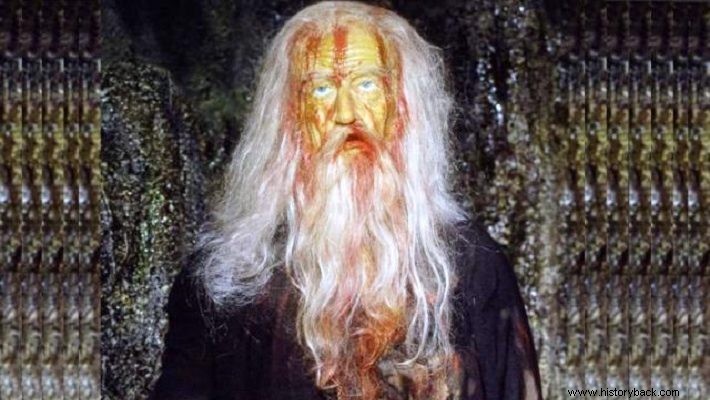
There have always been people in Greek history who put the love for the Motherland and Freedom above everything else. The bishop of Trikala (Trikkis) Dionysios also belonged to this category. An independent and haughty spirit, he could not tolerate the yoke of the barbarians. Initiated into every revolutionary movement, he himself had contacts with the Knights of Saint John. The
Turks had information about his activity and Dionysius was forced to flee to Europe, coming into conflict even with other clergy, who were simply less ruthless than himself. But later he returned to Greece and became a monk at the Holy Monastery of Agios Dimitrios Kerassovos. However, his eternal love for freedom did not let him rest.
This is how he began negotiations with the elders of the surrounding villages, even with ordinary villagers, preparing a revolution in Epirus. Dionysios managed to recruit a group of men, completely untrained in warfare, with whom he toured the villages preaching the message of resistance to the conqueror. One day, Dionysios and his men attacked the Turks living in the villages of Turkogranitsa and Zaravousa, whom they massacred.
This success raised the morale of the revolutionaries to the extent that they thought of attacking Ioannina itself! On Sunday, September 10, 1611, a strange group of people appeared in Ioannina. About 1,000 men, shepherds and villagers, "armed" with scythes, cleavers, sticks, stones and knives rushed against the house of the Turkish Pasha Asuman and set it on fire.
The Pasha and his family barely managed to escape by jumping from the windows. Then Dionysius and his men attacked any Turk they found in front of them with the cry "Kyrie Eleeson" and "haratji, haratzopoulon and anazulopoulon" (implying the new taxes that the Turks had imposed).
The Turks were initially taken by surprise. But when they understood what it was about they took up their weapons and attacked and easily dispersed the "army" of Dionysius. Panic ensued. The Turks began to slaughter in turn any Greek they found in front of them, even those who were just going to church.
Dionysios, seeing the flight of his men, hid in a small cave, at the roots of the castle of Ioannina, where at that time there was a temple of Saint John the Forerunner. The Turks searched in vain for the prototype of the stop. They finally found him. The ethnomartyr Dionysios was flayed alive and his skin was stuffed with straw and sent to Constantinople.
As for his men who were captured by the Turks, the unknown chronicler of the time tells us that they had an even worse fate than their leader, as some were hanged on gallows, some were burned alive and others were skewered.
At this point we mention that the torture of skewering and kreagra was the most painful that the sadistic imagination of the Turks could think of. During the spitting, the victim did not die immediately, since an effort was made not to affect his vital organs. Instead, they anointed the victim with tar and slowly roasted it over low heat!
On the kreagra (a scaffold with iron bars) the victim was impaled, either from the armpits or from the abdomen, with large iron bars and hung from the scaffold until he passed out, suffering from the weight of his body.
Besides Dionysus and the martyrs with him, another pious hierarch, the bishop of Phanarios and Neochorios Seraphim, paid with his life for his Christian faith. Seraphim had no involvement in the Dionysian movement. His deep faith, however, made him a role model in the eyes of the poor. It was precisely this standard that the Turks wanted to destroy.
So under the pretext of his participation in the "revolution" of Dionysios, they arrested him, tortured him fiercely, despite his age and finally beat him. However, their pursuit to destroy the model of the Greeks failed miserably, since the sacrifice of the Saint and ethno-martyr bishop, brought about the exact opposite result in the psychology of the enslaved Greeks, just like the murder of the patriarch Gregory V in 1821.
